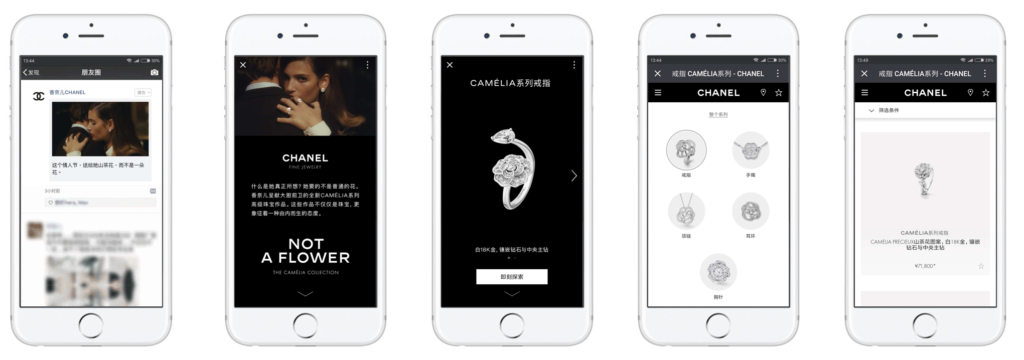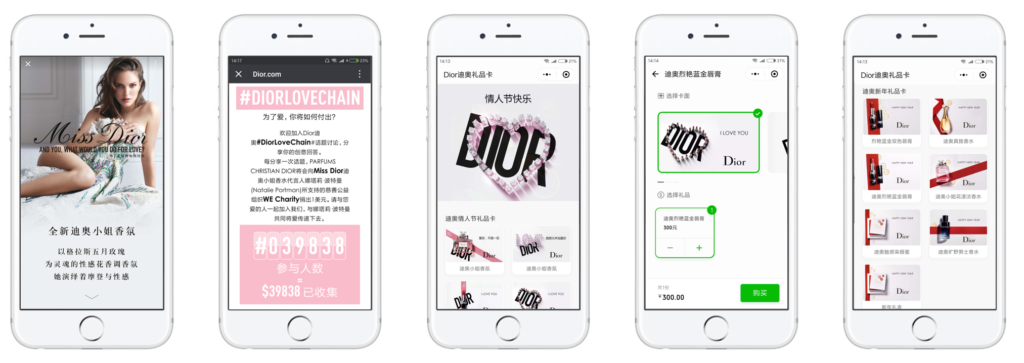We all know that Tencent and Alibaba dominate digital life in China. But why did they become so successful? And what can Western brands learn from their approach? This article gives three clear reasons for how the Tencent and Alibaba apps became the dominant points of interface for consumers across multiple touchpoints. Additionally, it states that understanding what Tencent and Alibaba are doing with apps, mobile payments and ecommerce could give us a real insight to what will happen in marketing in the West.
Jacco
The 10 Most Influential Fashion Stylists in China
The professional, in-store and amateur personal stylists of famous KOLs are themselves becoming KOLs. They are the once who shaped the entire image of the famous KOL, based on their talent, reputation, and social media followings. And brands are slowly starting to recognize their value of direct ambassadors. We believe this is certainly a good development towards a less mainstream approach. “The trust in expertise and the cult of opinion leaders and influencers there is very strong, and they have serious power in making a success of trends. Brands are certainly courting these players for their charisma in upselling goods and flash sales,” said Susan Jenkyn Jones, from Conde Nast China.
Alipay sends eight Chinese tourists on a cashless experiment in Finland
Chinese outbound tourism numbers have been growing rapidly and they are traveling everywhere. Countries that want to benefit from this industry do need to adapt though. One country that is ahead of the pack is Finland. According to Finland’s national tourism board, it is the first country outside China where Chinese tourist can make ALL payments with Alipay. “Alipay was first made available in Finland in December 2016. I am glad to see it is widely accepted among Finnish merchants today, and it demonstrates Finland’s commitment to ensure that Chinese visitors leave our country with an unforgettable experience,” said Paavo Virkkunen, executive vice president of Visit Finland.
China’s Ban on Rap and Hip-Hop: What Brands Need to Know
When your brand is associated with a ‘Trendy TV Show’ it could be raining cash when it is still on fire. However, what happens when it turns into a bad influence to society because your direct or indirect ‘brand ambassadors’ go rogue? It might temporarily make you extremely popular among the youth, but it will also put you at risk of being noticed by the regulatory bodies in China. That is exactly what happened to the popular TV show “The Rap of China”. So sometimes it might be better to play it safe and temporarily overt support of explosively ‘Trendy Cultures’. The lesson here is to stay up-to-date on trends and regulations in China to make sure you don’t go wrong and certainly never identify your brand with just one trend or hype.
Le Tote’s expansion in China is centered around WeChat
They don’t have a desktop app in China, and their approach has been 100% mobile-first. Le Tote’s CEO in China stated that their customers spends all their time on mobile. “So we started with a WeChat app. People interact with friends, sell things and make payments through WeChat. It’s a very dominant platform,” said Tondon. Le Tote considers their approach a low-risk way to enter one of the riskiest markets and we agree. Newbies to China can certainly learn from this.
Why China? A growing middle class in China (part 1/3)
For Chinese Millennials, Tech Trumps Heritage
A recent report by Agility Research & Strategy suggests the best way to capture the attention of luxury millennial consumers is with innovative technology, not heritage and tradition. Based on that finding it is suggested that luxury brands could benefit by making their products and services more innovative. We actually believe this holds true for every company wanting to succeed in China. Read on to learn more about the reports findings.
Don’t Highlight the Hype, Internet Office Tells Weibo
Following the recent errors of Marriott resulting in their Chinese website still being down, it is now Weibo’s turn to be reprimanded by the Cyberspace Administration of China (CAC). It was said that “content of wrong public opinion orientation, obscenity and ethnic discrimination continued to spread on Sina Weibo” and for that reason the it was ordered to move several portals offline. Weibo has temporarily suspended some of its popular features among which is the “hot searches” page, which displays the social networking platform’s top trending topics.
The State of Search Engine Marketing in China
Great article explaining the state of complex search engine market in China in a refreshing way. Baidu is no longer the only players in SEO & SEM and paid search ads no longer dominate all the results. Ultimately a native speaker or team on the ground in mainland China would be key for three reasons: 1) to acquire the right legal licenses (ICP) and get local hosting; 2) Translate your brand expectations into correct Chinese keywords; 3) Insight into the market to select correct tools and platforms.















